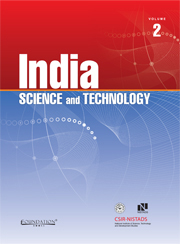Book contents
- Frontmatter
- Contents
- List of Contributors
- List of Tables
- List of Figures
- Acronyms and Abbreviations
- Foreword
- Acknowledgements
- Science and Technology (S&T) and Human Resource
- Science and Technology (S&T) and Innovation Support System: Organisational Arrangement for Promotion of Technological Innovation
- Science and Technology (S&T) and Industry
- Science and Technology (S&T) Output and Patents
- Rural Development – Science and Technology (S&T) Strategies and Capacities
- Index
Science and Technology (S&T) and Human Resource
Published online by Cambridge University Press: 05 September 2013
- Frontmatter
- Contents
- List of Contributors
- List of Tables
- List of Figures
- Acronyms and Abbreviations
- Foreword
- Acknowledgements
- Science and Technology (S&T) and Human Resource
- Science and Technology (S&T) and Innovation Support System: Organisational Arrangement for Promotion of Technological Innovation
- Science and Technology (S&T) and Industry
- Science and Technology (S&T) Output and Patents
- Rural Development – Science and Technology (S&T) Strategies and Capacities
- Index
Summary
Overview
The current century has already earned the sobriquet, – ‘the scientific century’. The phrase aptly sums up what a nation needs in order to survive and advance, as the twenty-first century unfolds. In the short term, any neat linear relationship between science, innovation and economic prosperity may not exist. But in the long term, economic history reveals the central role of science and innovation in productivity growth of industrialised nations. The writing on the wall for India is clear, ‘unless we get smarter, we will remain poor’.
Increasing demand for skilled work force intensifies the pressure to produce manpower of a higher quality, which is a part of, what Gunnar Myrdal called, ‘the modernisation process’. Since India joined the global knowledge economy, it has operated in a framework in which the human capital of a nation increasingly assumes a central role in its organisational success, economic prosperity and technological competency. The educational system of a nation is a key ingredient in defining the quality and volume of its human capital.
This theme on S&T Human Resource presents different facets of S&T education in India. It begins with a study of enrolments at primary level of education followed by secondary to tertiary (including professional education, technical and medical levels. The theme also highlights the available infrastructure at different levels of education. It further captures the social aspect of science education at secondary level and attempts to take a stock of India's science education from secondary to tertiary level of education.
- Type
- Chapter
- Information
- IndiaScience and Technology, pp. 1 - 84Publisher: Foundation BooksPrint publication year: 2013



